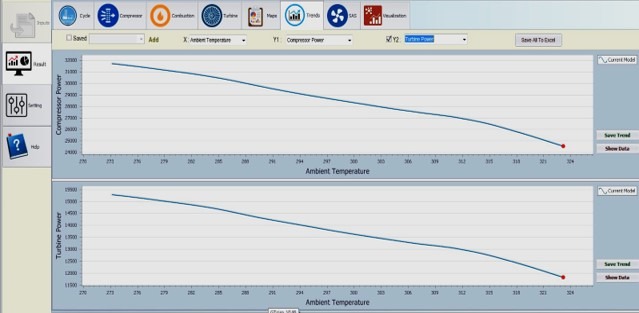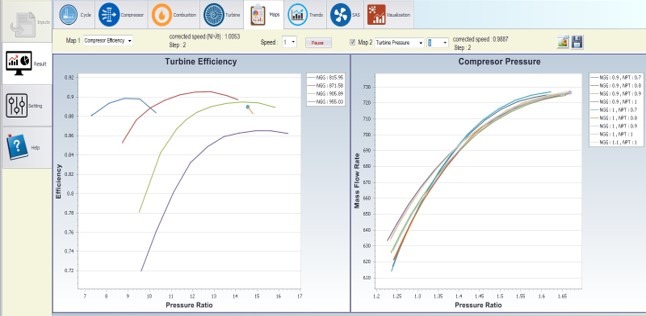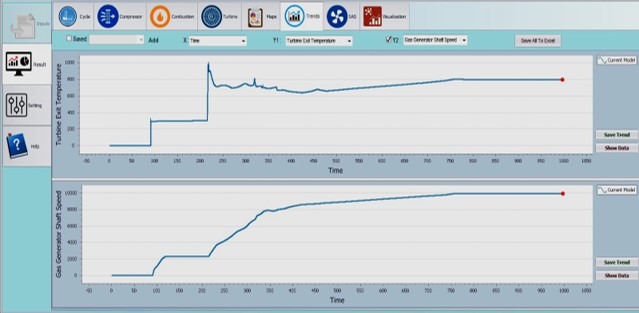GT Sim
A Lot More Accuracy in Performance Analysis
What it offers
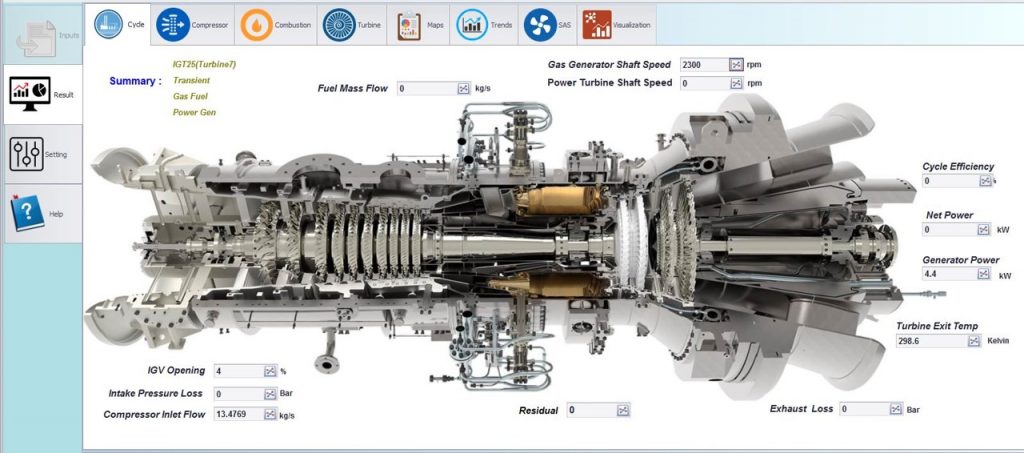
A glimpse into its design
Accurate models, used to analyze the engine, are the distinguishing characteristics of this software. Input of the model configuration is a cycle design or any known reference point (or preferably several points) of a selected engine with its conditions. Information, needed for the cycle configuration such as turbine (stage by stage) and compressor (component) maps, is either already available in our company (through complex calculations) or is provided by the manufacturer.
Besides being a tool to predict performance, GTsim is suitable for parameter sensitivity analysis especially ambient condition and different fuel combination analysis, etc. The inputs are based on the model configuration and if carefully selected, outputs are obtained with very high accuracy. Output data is delicately displayed and can be reported by either graphs or excel tools. Available data includes the gas condition (temperatures, pressures, mass flow, speeds, etc.) and the gas composition. The simulation results can be saved and exported to be used for custom analyses.
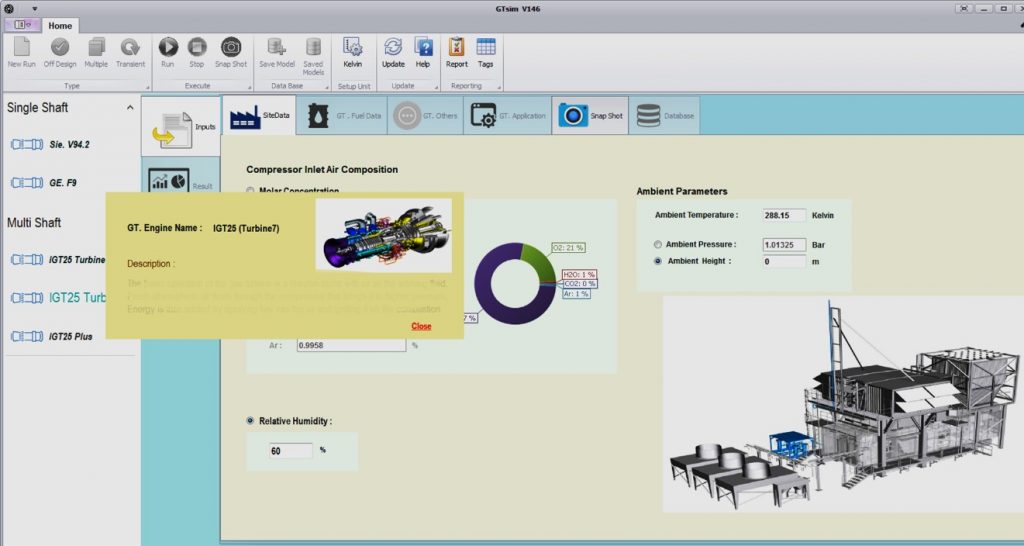
Features
GTsim’s most interesting features have been listed below
Flexibility
- Specifying the data for the overall engine performance design aim and the component design
- Simulating the most popular engines in the industry (single and multi-shaft)
- Steady-state (single and multipoint) and transient off-design simulation
- Evaluation of engine behavior in a wide variety of ambient and working conditions
- Ability of variable geometry study, and its effect on performance
- Could be used in turbo-compressor and turbo-generator applications
- Monitoring “running lines” on the characteristics map

Power
- A complicated and precise model with relatively good running speed
- Validating engine model with test data
- Simulation of engines in off-design and transient model for different applications
- Prediction, design & sensitive analysis for applicable and popular engines
- Simultaneous analysis of effects of multiple parameters on performance
- Simulation of several models of engines that are used in industry in details (Siemens V94.2, GE F9, IRAN IGT25 and upgraded versions )
- Predicting and monitoring of Secondary Air System (SAS)
- Off-design simulation in multipoint model with effective parameters
- Ability to Simulate GT performance in variant regimes such as startup, speed/load following, shut down, Emergency shut down in transient application (online & offline)
- Sequence monitoring
- Ability of stage by stage evaluation of turbine performance
- Powerful data base for saving and loading
- Getting outputs reports
- Displaying temperature and pressure contours for SAS and other systems
- Snapshot features which allow to freeze running model and to continue based on the previous or a new condition (off/online).
User-friendliness
- Simple graphical user interface
- A thorough and comprehensive software help
Component based
- The most applicable engine architectures
- 0-dimensional modelling
Extension
- Temperature and pressure contouring for SAS and other systems
- Snapshot features which allows to freeze running model and continue it in any time and also allows to change the model conditions at the continuing (off/online)
